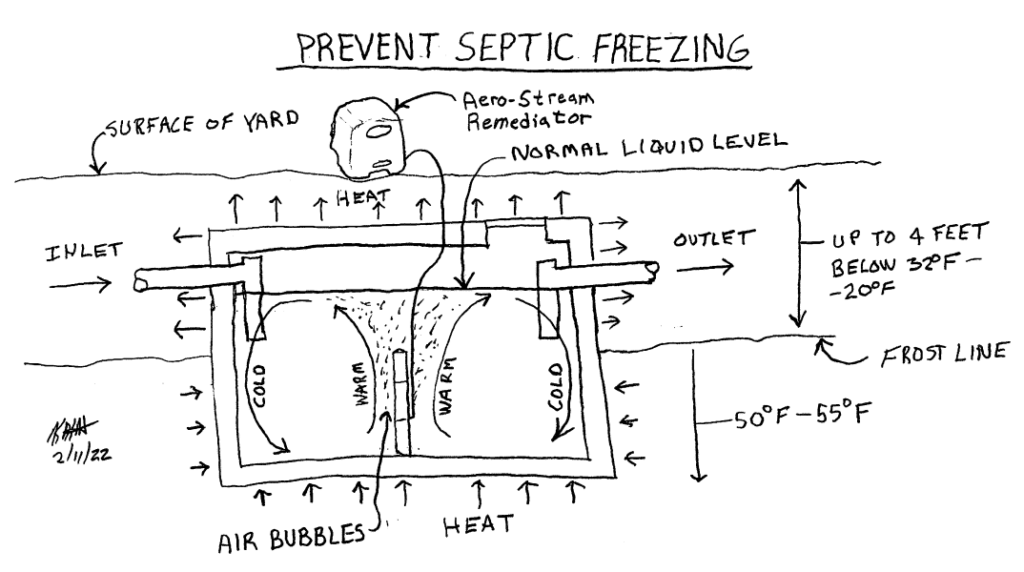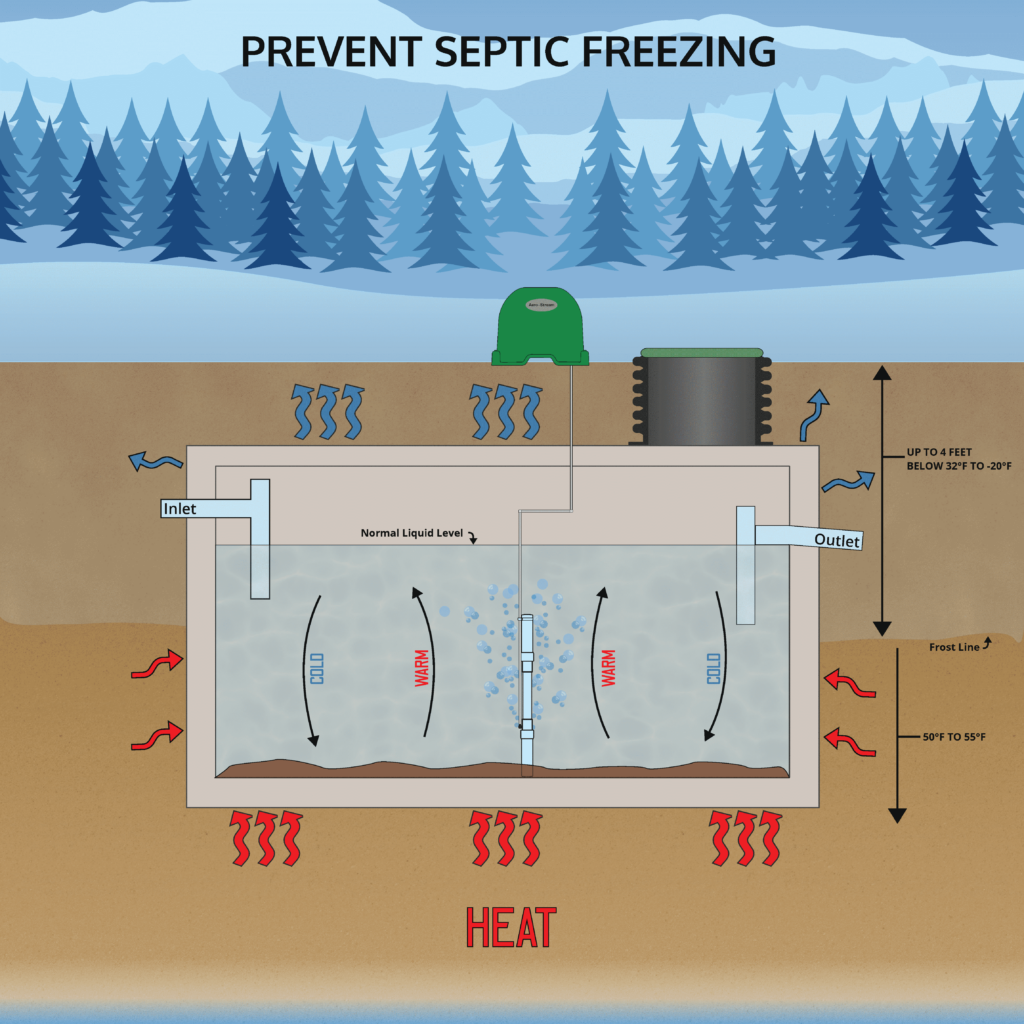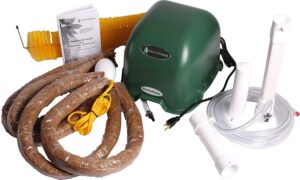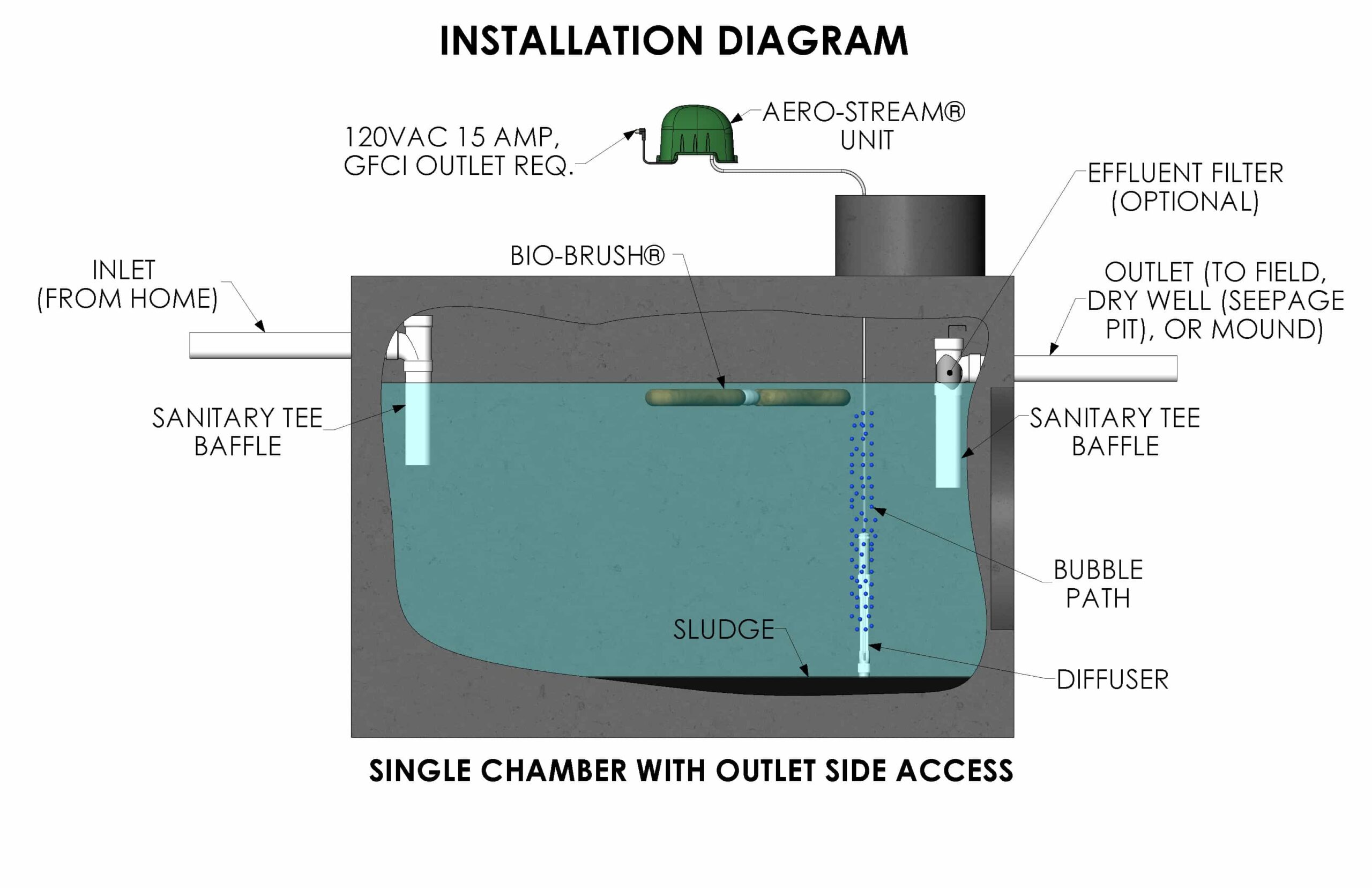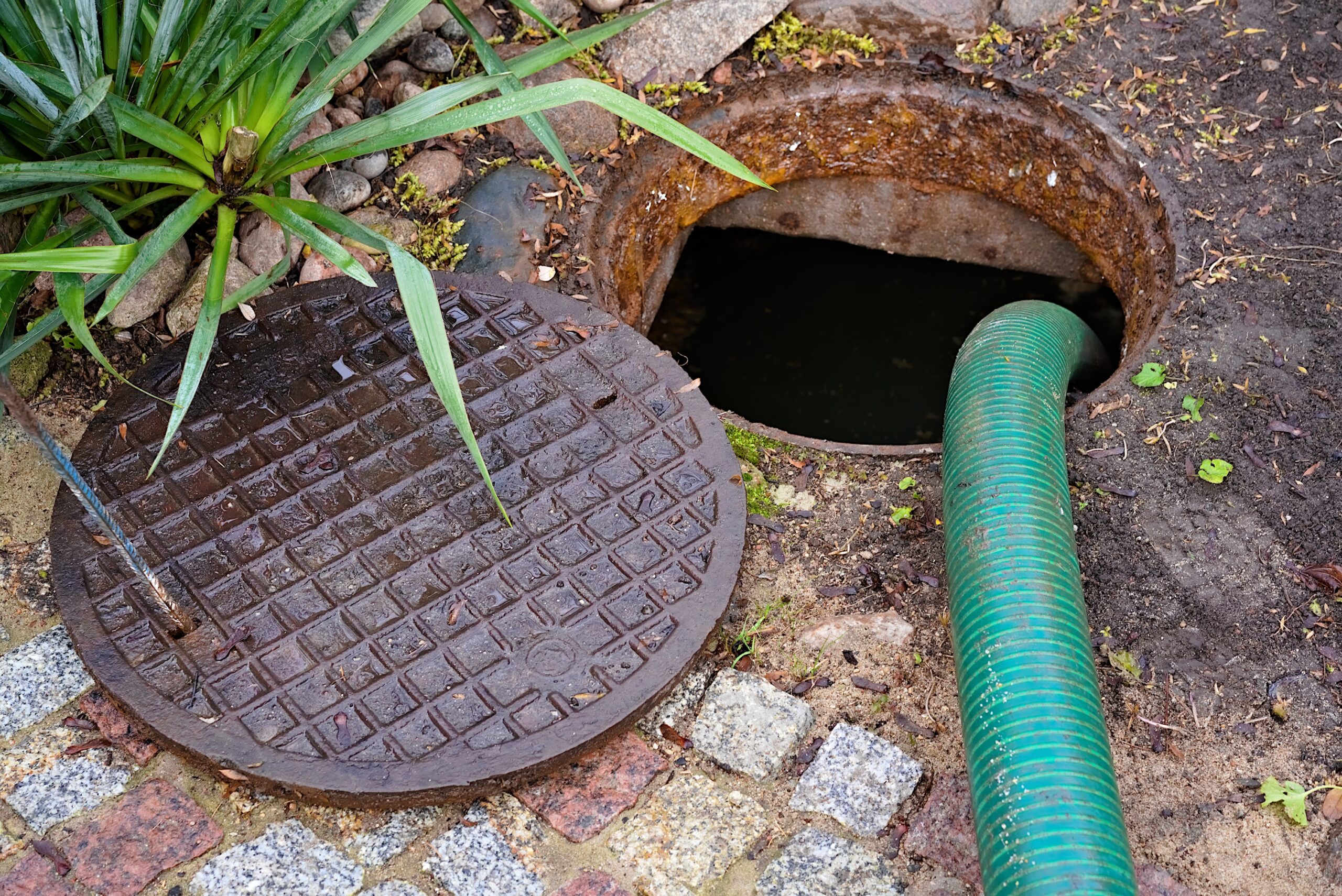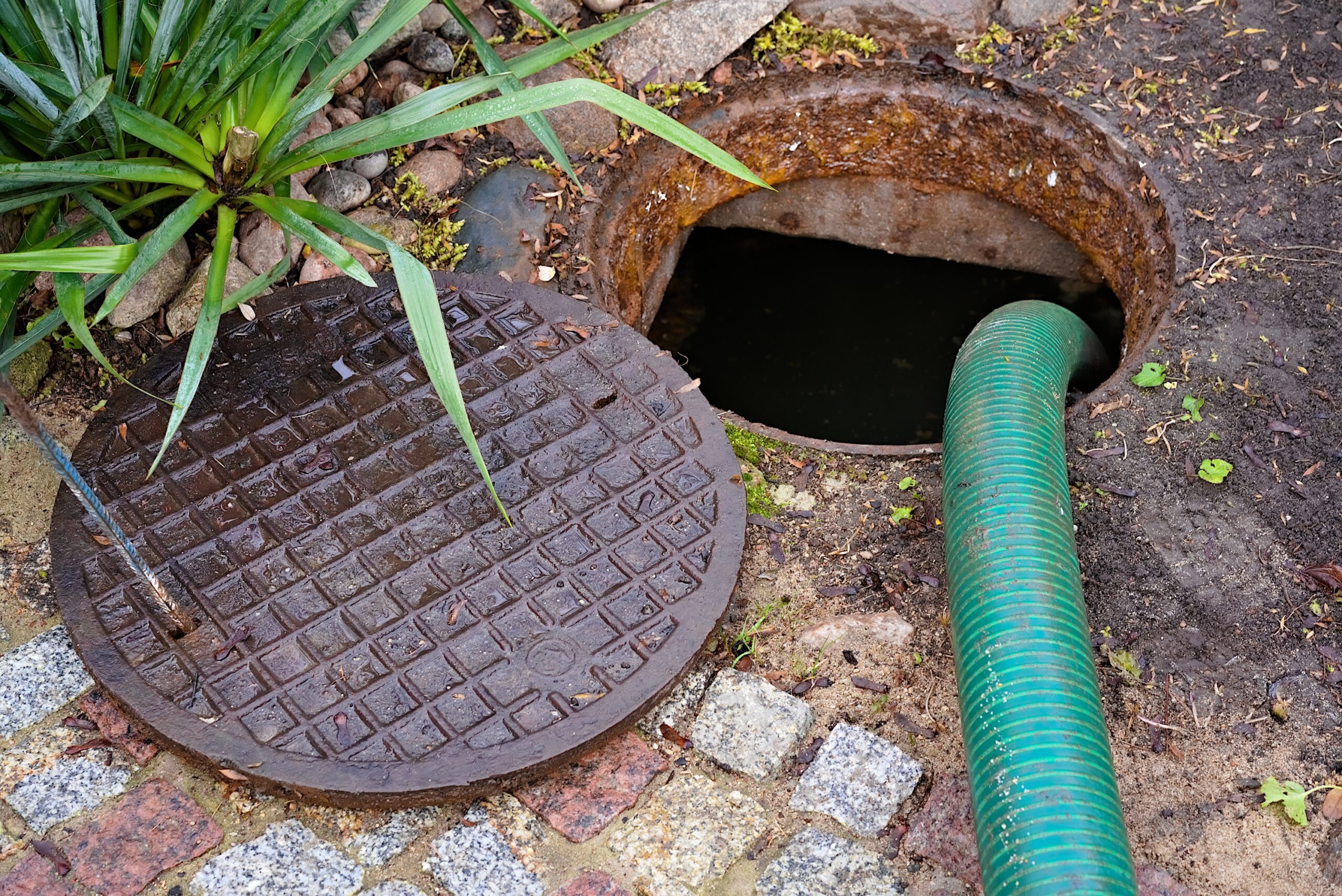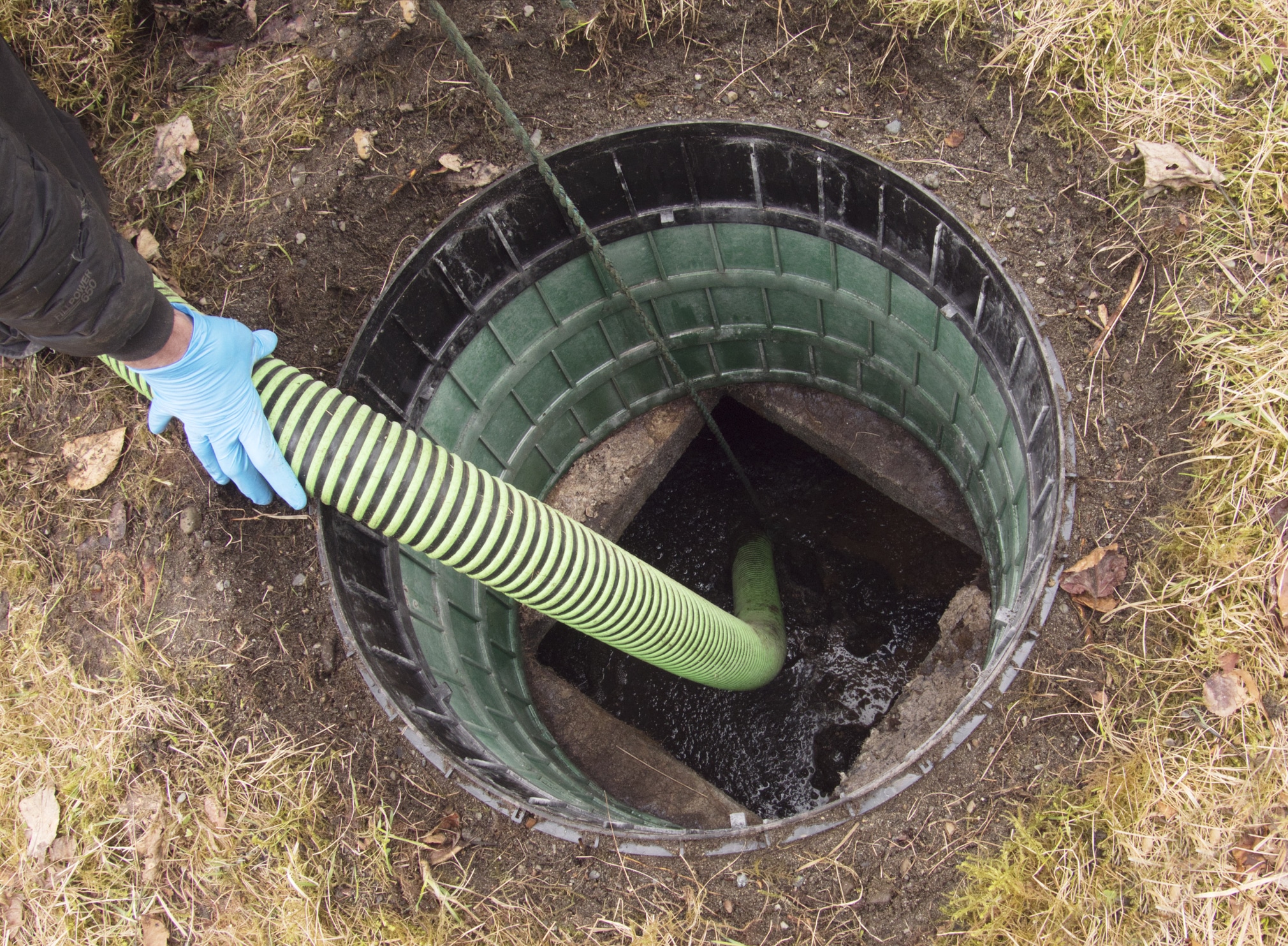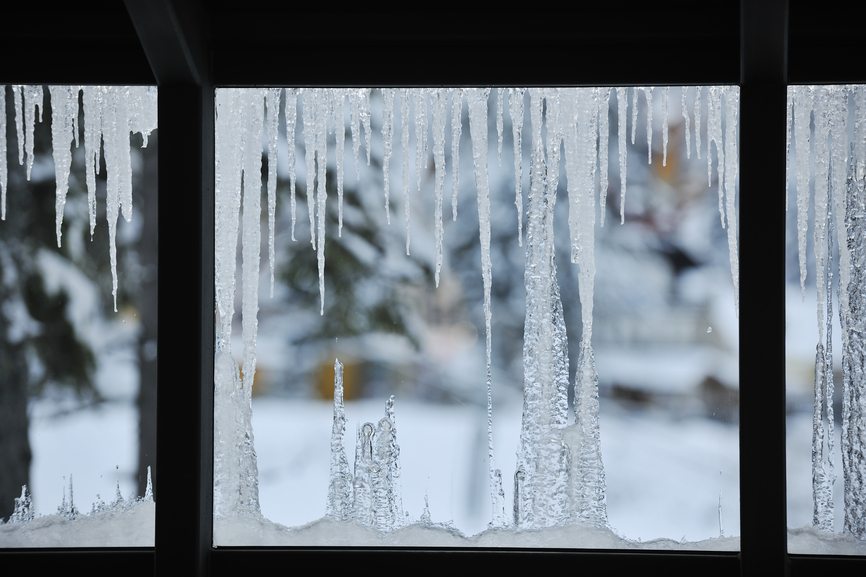
What Causes Septic Freezing Problems
Sub-Zero temperatures can freeze components of your septic system to freeze. The most likely components of your septic system are the pipes coming from the house into the septic tank and the water in the tank. Constant low flow of water from leaking fixtures such as toilets and faucets will freeze in the pipe. The ice continues to build up and eventually blocks the entire pipe.
The other components of the septic system that can freeze are the pipes going to the drainfield and the drain field.
There is less of a chance of freezing if the septic system is used regularly. The reason for this is there is constantly water flowing through the system. Septic systems that are used periodically will likely have issues with the tank freezing.
The wastewater in the tank becomes thermally stratified. That is, the water near the top is cold and the water near the bottom is warm. There is some natural convection in the tank. The warm water tends to rise and the cold water sinks, however, this slow movement is not adequate to prevent septic freezing.
As illustrated below, the normal level of the tank is even with the bottom of the outlet pipe going to the drainfield. When a layer of ice forms on the surface it blocks the water from flowing out of the tank to the drainfield. This causes the water coming from the house into the tank to back up in the inlet pipe. This not only clogs the pipe from the house into the tank but makes it susceptible to freezing.
In cold climates, the frost can penetrate up to 4 feet below the surface of the yard. This soil surrounding the tank will be less than 32 degrees F and as cold as -20 degrees F. The heat in the tank moves out of the tank into the soil. Below the frost line, the surrounding soil is about 50 degrees F. This is a massive unending heat source that warms the tank and the water.
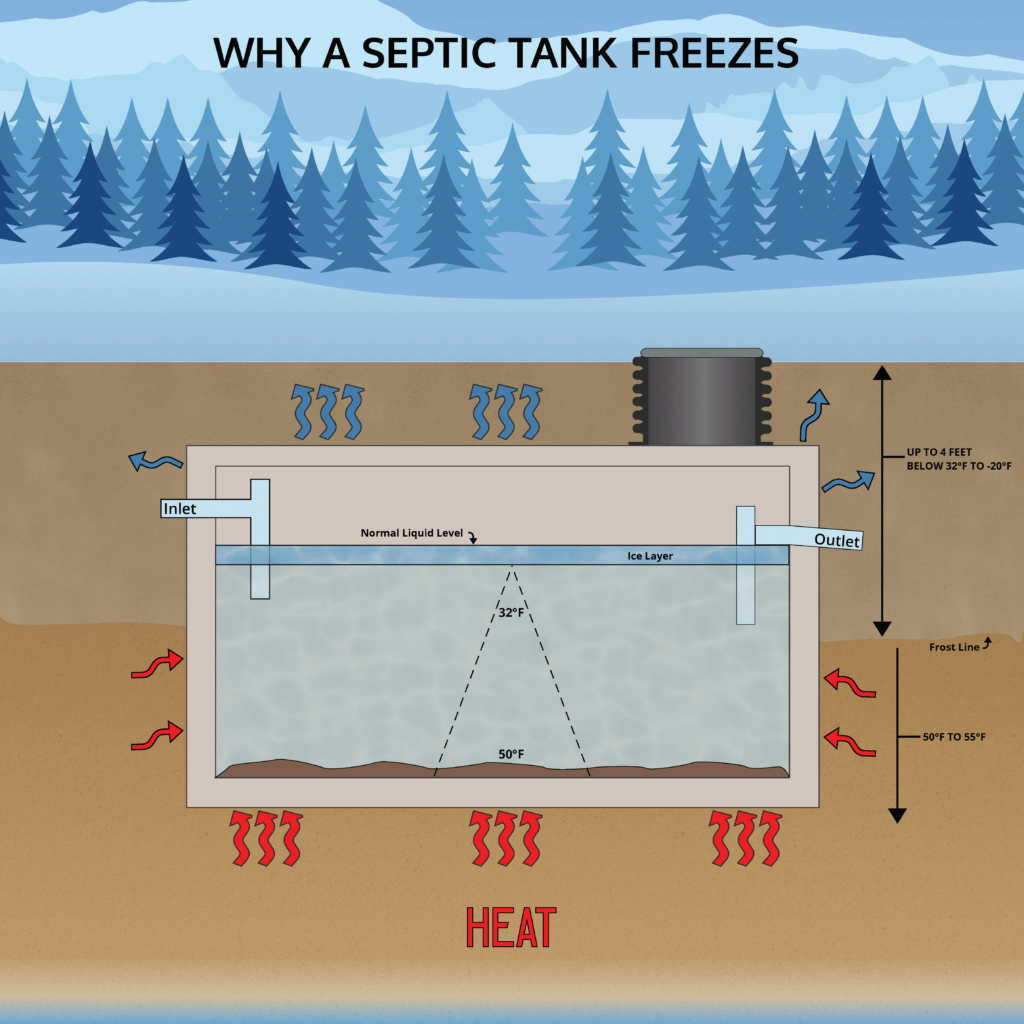
To solve the problem of septic freezing the cold and warm water, water needs to be mixed. The mixed water will always be above freezing because the infinite source of heat from the soil surrounding the tank below the frost line will warm the water. The best way to mix the water is with an Aero-Stream® aerobic remediation system. Our system adds air into the system through a specially designed diffuser. As the air bubbles rise they pull the warm water from the bottom towards the top and the cold water.
Prevent Septic Freezing
In addition to circulating the water in the tank, the air compressor heats the air as it passes through adding additional heat to the tank. The Bio-Brush accumulates aerobic bacteria. As the water is circulated in the tank the organic material is caught in the Bio-Brush. The aerobic bacteria quickly and efficiently devour the organic waste. The digestion reaction is exothermic. This means the digestion gives off heat.
In summary, converting your anaerobic septic system to an aerobic environment will help prevent septic freezing by:
- Eliminating temperature stratification by mixing the water
- Add heat to the water from the electro-mechanical compressor
- Generate heat substantially greater from the aerobic digestion process as compared to the anaerobic process.
Additional Protection to Help Stop Septic Freezing
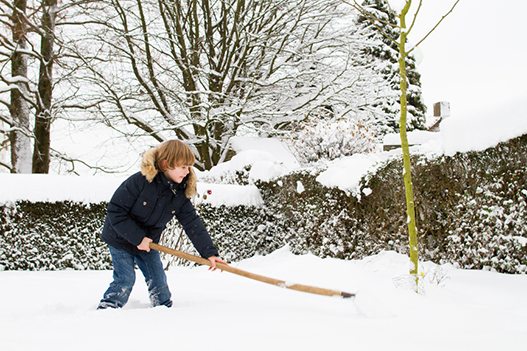
Snow cover and mulch can protect the tank and pipes from freezing. These materials act as an insulator that prevents frost from reaching these components in the ground. Snow cover is useful if it is loose and uncompacted. If there has been foot or vehicle traffic on the snow it will not be effective in preventing the frost to penetrate the ground.
If snow cover is inconsistent, hay or mulch can be spread over the area of the drainfield and septic tank. Bear dirt is more susceptible to frost as compared to vegetation on the surface. Always try to vegetate the area before freezing temperatures. Try to avoid vehicle, animal, and foot traffic in the area of the drainfield, tank, and pipes. This will also avoid shifting of the pipes as the frost is coming out of the ground.
Fix Drainage and Leaks Issues
Always repair any leaking toilets and faucets. Fix drainage issues that allow water to flow towards the septic components before the cold temperatures set in. This will both conserve water and avoid expensive repairs during the months.
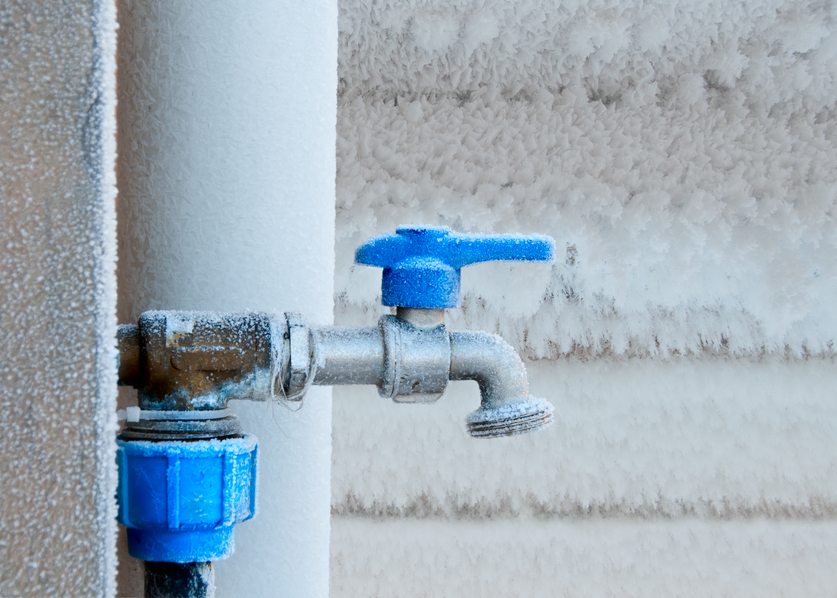
If Your System Freezes, What Do you Do?
If you experience septic system freezing this winter, contact a professional installer or pumper to determine where the freezing is occurring so the problem can be corrected. If the ice is in the outlet or inlet pipe a contractor can thaw the ice with a “Steam Jet” inside the pipes. in many cases, the ice layer in the septic tank is thin and can be broken with hand tools or a fishing ice auger. If the surface of the ice can be broken an Aero-Stream Remediator can be installed which will thaw the tank out and prevent septic freezing again. The septic tank can be used as a holding tank until it thaws if you can’t immediately fix the issue. This is not a cheap solution, but it is necessary sometimes while waiting for temperatures to rise or for the right equipment to become available to thaw the system.
Things you should NOT do:
- Do not add additives, salt, or antifreeze
- Do not start a bonfire above the tank
- Do not run hot water down the drain to unfreeze the pipes
Being proactive before cold temperatures arrive is the best solution for dealing with frozen septic systems and the high costs associated with this issue.
Let the experts at Aero-Stream® diagnose your problem and guide you through the solution saving you money and stress. Experience First Class Customer Service and Septic System Knowledge. Don’t let them dig! Before you do anything else call us.
Eliminate the Stress. Call Anytime (877) 254-7093

